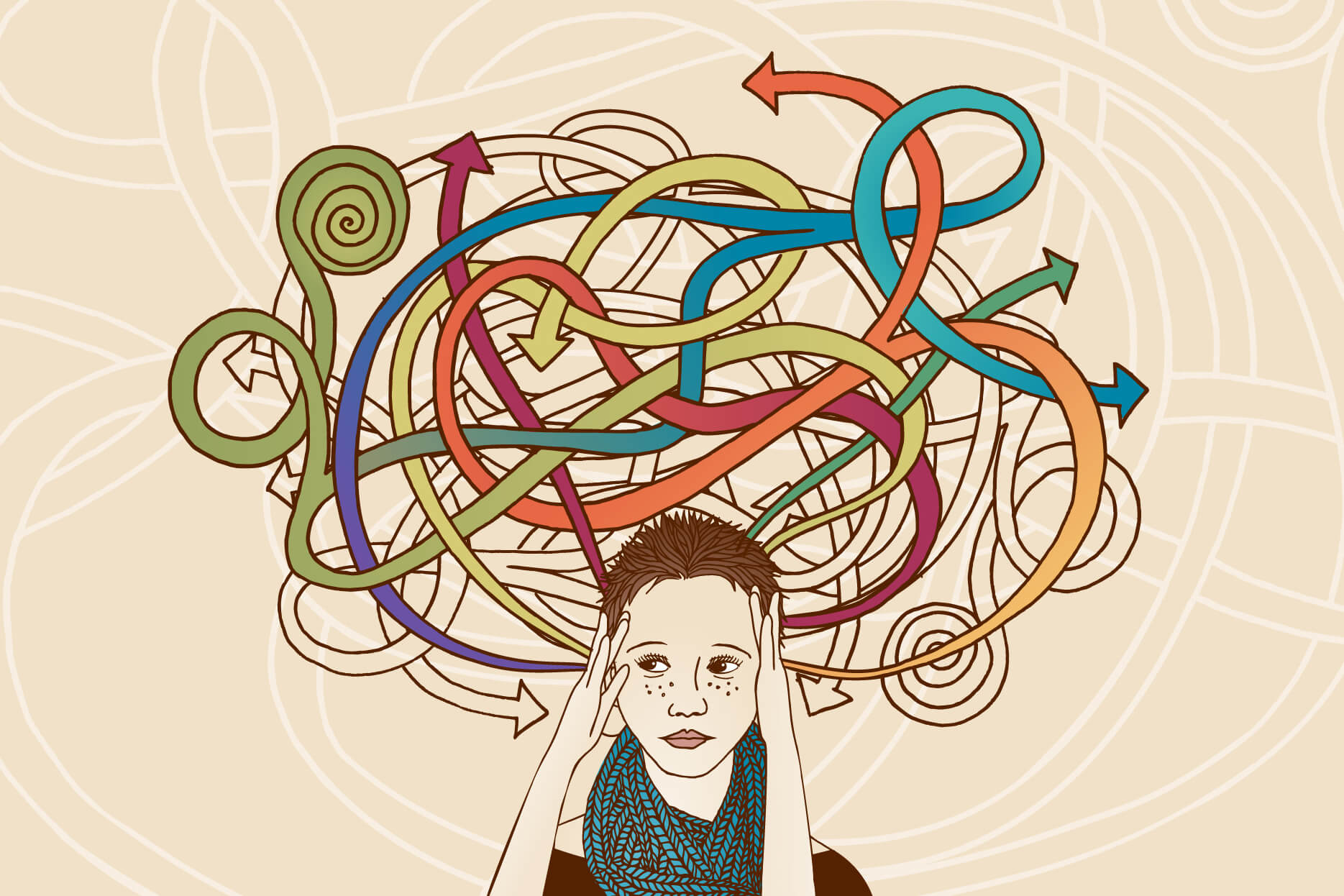 Covering COVID-19 is a daily Poynter briefing of story ideas about the coronavirus and other timely topics for journalists, written by senior faculty Al Tompkins. Sign up here to have it delivered to your inbox every weekday morning.
Covering COVID-19 is a daily Poynter briefing of story ideas about the coronavirus and other timely topics for journalists, written by senior faculty Al Tompkins. Sign up here to have it delivered to your inbox every weekday morning.
Between now and the new year, the Centers for Disease Control and Prevention says close to 40,000 more Americans will die from the coronavirus. The U.S. death toll currently stands at 792,883. The forecast is built on models devised by the Forecast Hub at UMass Amherst. The Institute for Health Metrics and Evaluation forecasts from the University of Washington are equally grim.
We are starting to understand omicron
When the omicron variant of the coronavirus turned up, researchers said it would take two weeks to get enough data to understand how big and how bad this new threat could be. Right on time, we are gaining some understanding of the variant.
It is spreading fast. Our vaccines provide some protection but that protection is not ironclad. The people who get the sickest are unvaccinated.
Here is what is new:
- A new lab study of the Pfizer vaccine’s effectiveness shows that the vaccine is useful in preventing COVID-19 infection and reduces the severity of the infection for those people who do get sick.
- The newest study finds that even though omicron does escape the vaccination in some people, protection among people who are fully vaccinated and have a booster will be pretty high. Look for governments around the world to push boosters hard. In fact, soon we may think of the Pfizer vaccine as a three-dose vaccine. A German study indicated that the Moderna vaccine behaves similarly.
- Britain is seeing COVID-19 cases rise. The government is urging people to work from home. More restrictions may come soon if cases keep rising.
- South African hospitals are seeing more patients who are infected with the virus, but almost all of the severe cases are among unvaccinated patients. Take a look at this one district of South Africa. A fifth of the patients had COVID-19 pneumonia. Among the nine pneumonia patients, eight were unvaccinated and one was a child.
- It is uncertain if — given that a three-dose regimen of the vaccine is likely effective in protecting against severe illness — we will need a new version of the vaccines. Moderna and Pfizer are both working on updated versions of their vaccines that might provide greater protection against omicron and future variants.
The omicron variant is quite contagious. In fact, in South Africa, this variant is the most contagious so far in the pandemic. The measure of how contagious a virus is can be expressed as the R0. It is an estimate of how many people an infected person might also infect. An R(2) virus would indicate one person would affect two others.
Keep in mind that if the R0 is greater than one, you are facing a spread so fast that a pandemic will occur. The omicron variant has an R0 of three, meaning it is spreading incredibly fast. Healthline explains:
- If R0 is less than 1, each existing infection causes less than one new infection. In this case, the disease will decline and eventually die out.
- If R0 equals 1, each existing infection causes one new infection. The disease will stay alive and stable, but there won’t be an outbreak or an epidemic.
- If R0 is more than 1, each existing infection causes more than one new infection. The disease will be transmitted between people, and there may be an outbreak or epidemic.
Compare omicron’s R0 to the 1918 Spanish flu, which was about a 2-2.8.The H1N1 outbreak was about 1.6. Again, the omicron variant is estimated to be in the range of three. Measles, by the way, is rated as 18. HIV is a 4.
More than one in five people in South Africa who are tested for the virus are infected.
Epidemiologist Dr. Katelyn Jetelina summarizes:
There’s a good chance Omicron will outcompete Delta in the United States. This coupled this with the high unvaccinated rate and lab data showing partial vaccine immunity will result in a substantial Winter wave. The rate of breakthrough cases will be higher, but I’m hopeful that boosters will largely keep people out of the hospital.
We’re all exhausted. The scientists. The healthcare workers. The parents. The pharmacists. The teachers. Everyone. But the virus isn’t. And it won’t be until we all take it seriously. Wear a good mask. Ventilate spaces. Test, test, test. And, for the love of all things, go get your vaccine and/or booster.
New Year’s Eve celebrations are being canceled

Confetti flies after the Times Square New Year’s Eve ball drops in a nearly empty Times Square, in New York, early Jan. 1, 2021, as the area normally packed with revelers remained closed off due to the ongoing coronavirus pandemic. (AP Photo/Craig Ruttle, File)
New York City is going to allow vaccinated celebrants to crowd Times Square this New Year’s Eve but lots of other places are abandoning party plans. The New York Times provides a roundup:
From Brazil to Germany to the United States and beyond, local officials have canceled Christmas and New Year’s Eve events. The beaches of Copacabana will be empty because officials in Rio de Janeiro have canceled the city’s famous New Year’s Eve celebration. Mayor Eduardo Paes, Rio’s mayor, said on Twitter on Saturday that the event would not take place because, “We respect science.”
“I make the decision with sadness, but we cannot organize the celebration without the guarantee of all the health authorities,” he added.
In Germany, the popular Christmas markets in Munich, Dresden and other cities did not open this year. Officials in Baltimore called off a New Year’s Eve fireworks show and said in a statement to WBAL-TV that the city hoped to bring the event back next year.
Why corn prices have risen during the pandemic
You may not think about corn as being central to many things, but it is, including fuel costs and as a central food supply. Corn is a main source of livestock feed and a big export crop.
But corn farmers have been hit hard in the last year with a lot of challenges, including rising fuel prices, labor shortages, hard-to-find machinery parts and fertilizer prices, which have doubled in the last year.
Axios calculates the many factors influencing the corn market right now:
As a result, corn and ethanol prices are way up. A gallon of ethanol recently cost $1.39 and costs about $3.17 now.
Growing fertilizer shortage
A fertilizer shortage is brewing. Again, if you live in a big city, you may not think of this as your story. But it is an everybody story because fertilizer is critically important to our food supply. Farmers have a narrow window in which they can apply it, so this is not the kind of shortage that we can just sit back and let the supply chain work itself out of its current snags.
Nitrogen supplies are threatened by rising natural gas prices. Other fertilizers have more than doubled in price from last year.
Fortune says the fertilizer shortage is enough to at minimum keep food prices high worldwide as crops come up short in 2022. Some are even using the words “food crisis” in their warnings.
The Guardian points out that a range of events conspired to create the nitrogen shortage, from an electrical interruption in Texas last winter to Hurricane Ida this summer:
In the US, nitrogen fertilizer supplies are adequate for applications before winter, said Daren Coppock, CEO at the US-based Agricultural Retailers Association. Applying fertilizer before winter reduces farmers’ spring workload.
But with prices so high, some farmers are delaying purchases, risking a scramble for supplies during their busiest time of year, Coppock said.
Global nitrogen fertilizer sales were worth $53bn in 2020, and prices are at least 80% higher so far this year, according to Argus Media.
Normally, MKC, a Kansas farm cooperative, sells fertilizer to farmers for payment up front with delivery months down the road, giving growers certainty about a key expense.
With prices soaring, MKC has scaled back its pre-paid sales out of caution.
“You just don’t know what the price is going to be. It has put a lot of retailers in a tough spot,” said Troy Walker, MKC’s director of retail fertilizer.
Delaying fertilizer purchases until spring runs the risk of further supply chain congestion as farmers rush to apply fertilizer and plant seed during a tight window.
“There’s going to be a lot of people who wait and see,” Coppock said. “[But] if everybody’s scrambling in the spring to get enough, somebody’s corn isn’t going to get covered.”
We’ll be back tomorrow with a new edition of Covering COVID-19. Are you subscribed? Sign up here to get it delivered right to your inbox.









